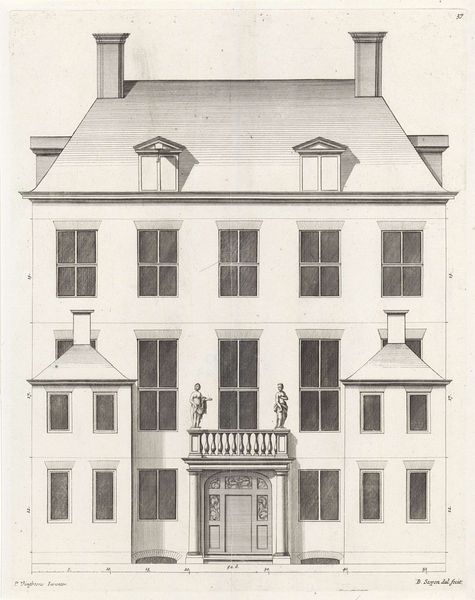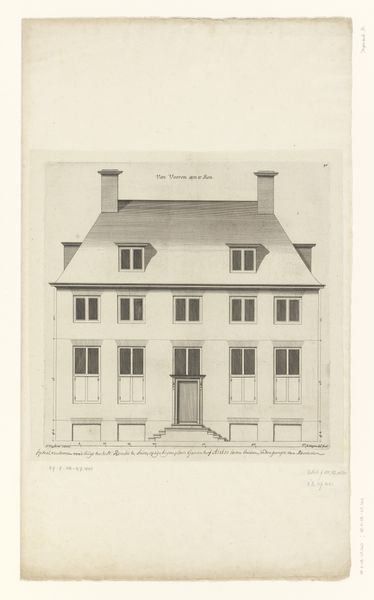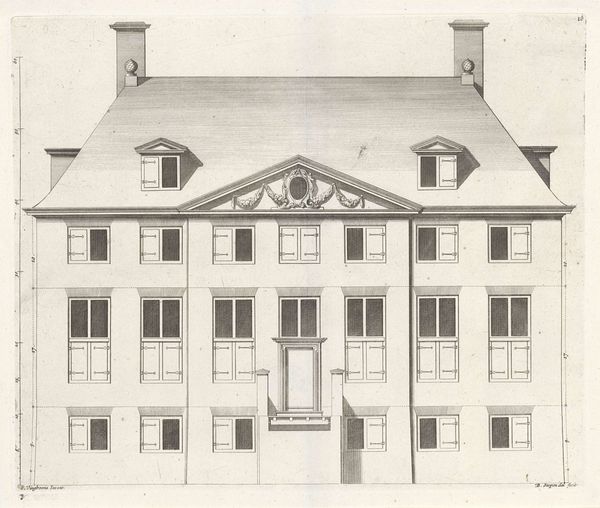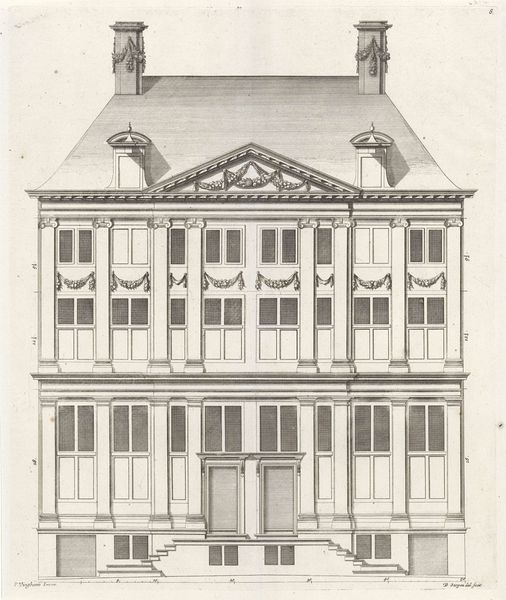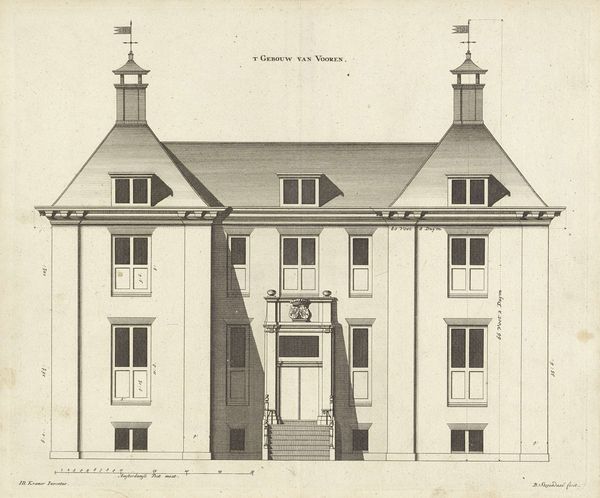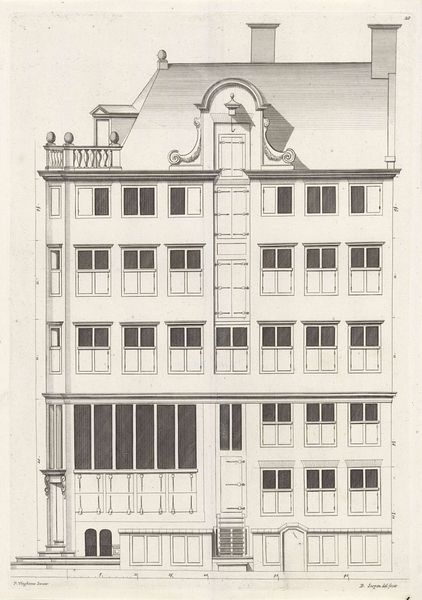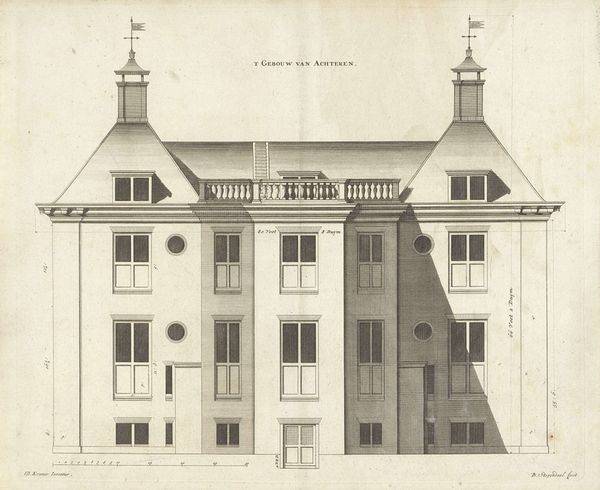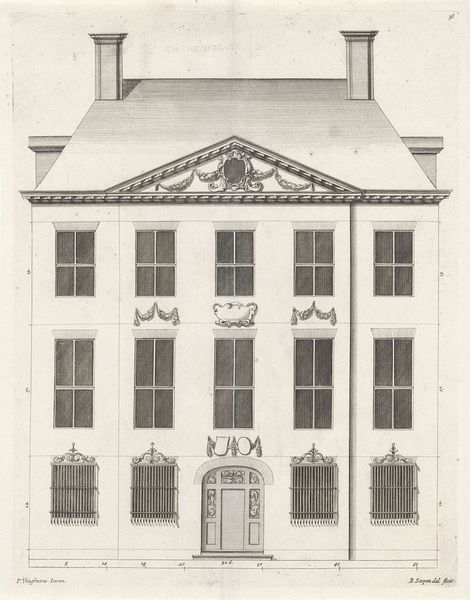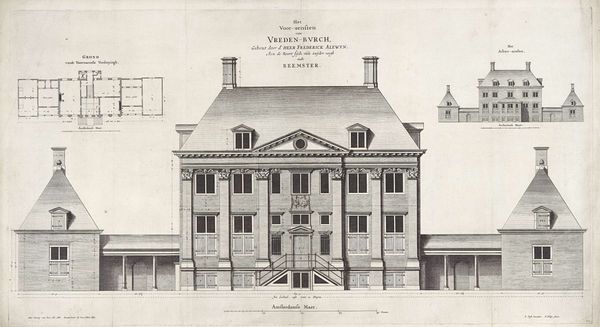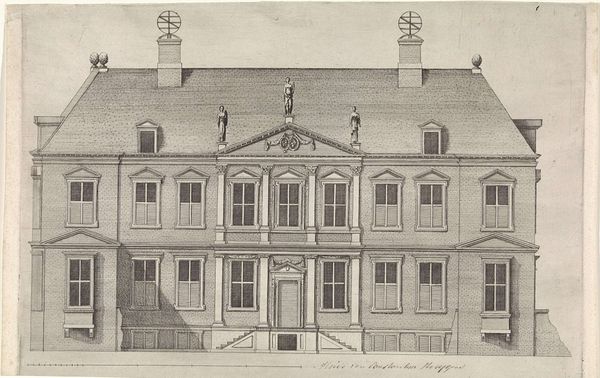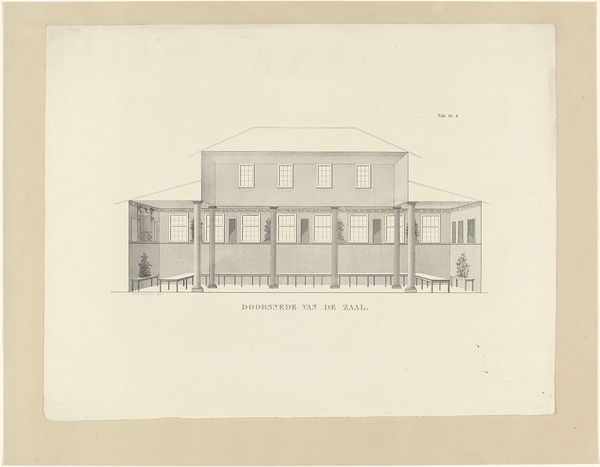
drawing, pen, architecture
#
architectural sketch
#
drawing
#
aged paper
#
quirky sketch
#
baroque
#
dutch-golden-age
#
old engraving style
#
sketch book
#
personal sketchbook
#
idea generation sketch
#
sketchwork
#
architecture drawing
#
pen
#
cityscape
#
storyboard and sketchbook work
#
architecture
Dimensions: height 260 mm, width 336 mm
Copyright: Rijks Museum: Open Domain
This print depicting the Huis van Constantijn Huygens was created by Theodor Matham using engraving, a technique that allowed for precise, reproducible images. The meticulous lines define the architecture, emphasizing the building's symmetrical facade and orderly arrangement. Engraving involves incising lines into a metal plate, inking the grooves, and then transferring the image to paper under high pressure. The clarity and detail achieved through this labor-intensive process speak to the value placed on precision and representation in the depiction of architecture. The print's creation would have been a collaborative effort, relying on the skills of not only the artist but also the printers who produced the final image. In this way, we can appreciate how the material and processes in art are tied to the wider social issues of labor, politics, and consumption. Considering materials, making, and context enriches our understanding, challenging traditional distinctions between fine art and craft.
Comments
No comments
Be the first to comment and join the conversation on the ultimate creative platform.
